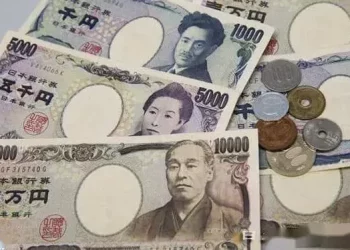The Federal Reserve, often shrouded in mystery, plays a pivotal role in the United States’ economic stability and monetary policy. Understanding the significance of the Federal Reserve is crucial for comprehending the nation’s financial landscape. In this article, we will unravel the geographical puzzle of where the Federal Reserve is located and explore the historical context that led to its establishment.
The Birth of the Federal Reserve: A Historical Overview
The Federal Reserve was born out of the need to address the financial panics and instability that plagued the late 19th and early 20th centuries. Established in 1913, the Federal Reserve Act marked a significant milestone in the nation’s financial history. Its primary objectives were to provide a more elastic currency, act as a lender of last resort, and supervise and regulate financial institutions.
See Also: Who Owns Most of the Federal Reserve?
Federal Reserve Districts: Decentralized Power
To effectively carry out its mandate, the Federal Reserve is divided into twelve districts, each with its Federal Reserve Bank. This decentralized structure aims to ensure that the nation’s monetary policy reflects the diverse economic conditions across different regions. The districts are strategically located to represent the various economic sectors of the United States.
Where is the Federal Reserve Headquarters?
The central nerve center of the Federal Reserve System is the Eccles Building, located in Washington, D.C. Named after Marriner Eccles, a key figure in the development of the modern Federal Reserve, this imposing structure houses the Board of Governors. The Board plays a crucial role in shaping the nation’s monetary policy and supervising the activities of the twelve regional banks.
Federal Reserve Banks: Regional Pillars of Stability
While the Eccles Building serves as the policy hub, the heart of the Federal Reserve lies in its regional banks. Spread across the country, from Boston to San Francisco, each Federal Reserve Bank operates independently within its district, catering to the unique economic challenges and opportunities of its region.
New York: The Financial Capital and the Federal Reserve
Among the twelve districts, the New York Federal Reserve Bank holds a special status. Situated in the financial epicenter of the country, the New York Fed plays a pivotal role in executing monetary policy, regulating financial markets, and conducting open market operations. Its proximity to Wall Street ensures that it remains at the forefront of financial decision-making.
Federal Reserve Branches: Extending Reach
To broaden its reach and impact, the Federal Reserve System includes branch offices in several major cities within its districts. These branches serve as operational arms, facilitating the implementation of monetary policy and supporting the financial infrastructure within their respective regions.
The Role of Federal Reserve Presidents
Each Federal Reserve Bank is led by a president who is appointed by the bank’s board of directors. The presidents, in conjunction with the Board of Governors, contribute to the formulation of monetary policy. Their regional perspective ensures that policy decisions align with the specific economic conditions of their district.
Federal Reserve Independence: A Key Tenet
Maintaining independence is a cornerstone of the Federal Reserve System. The structure, with its decentralized branches and regional autonomy, is designed to insulate the Federal Reserve from undue political influence. This independence allows the institution to make monetary policy decisions based on economic principles rather than short-term political considerations.
Public Accountability and Transparency
While independence is crucial, the Federal Reserve also emphasizes transparency and accountability. Regular reports, public statements, and Congressional hearings ensure that the institution remains open and accountable to the public and elected representatives. Striking the right balance between independence and accountability is a continuous challenge for the Federal Reserve.
Challenges and Controversies
Despite its critical role in stabilizing the economy, the Federal Reserve has not been immune to criticism and controversies. Debates often revolve around the institution’s level of transparency, the impact of its policies on income inequality, and the perceived lack of oversight. Navigating these challenges is an ongoing process for the Federal Reserve as it strives to maintain public trust.
Conclusion:
The Federal Reserve, with its intricate network of regional banks and the central hub in Washington, D.C., is a linchpin of the U.S. financial system. Understanding where the Federal Reserve is located is just the tip of the iceberg; comprehending its functions, challenges, and significance is essential for anyone seeking a deeper insight into the nation’s economic stability and monetary policy. As the economic landscape evolves, so too will the role of the Federal Reserve, ensuring that it continues to adapt and fulfill its mandate for generations to come.
Related Topics:
Who Owns the 12 Banks of the Federal Reserve?
Who Really Controls the Federal Reserve?
Unraveling the Origins: Who Funded the Federal Reserve?

























